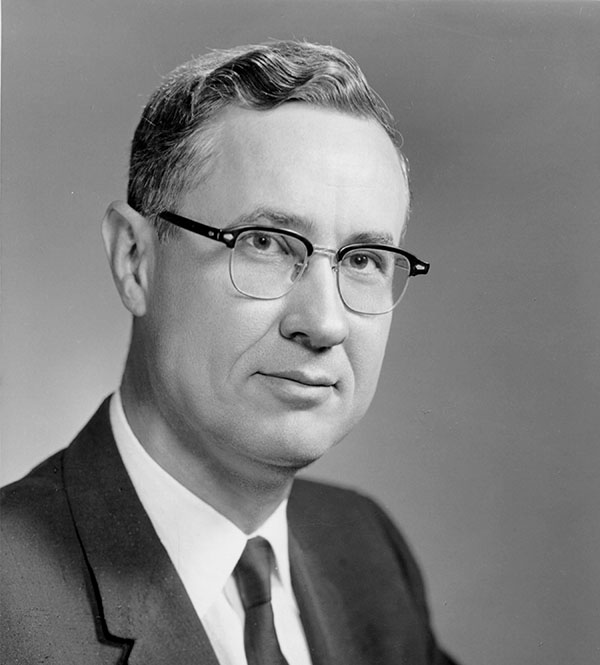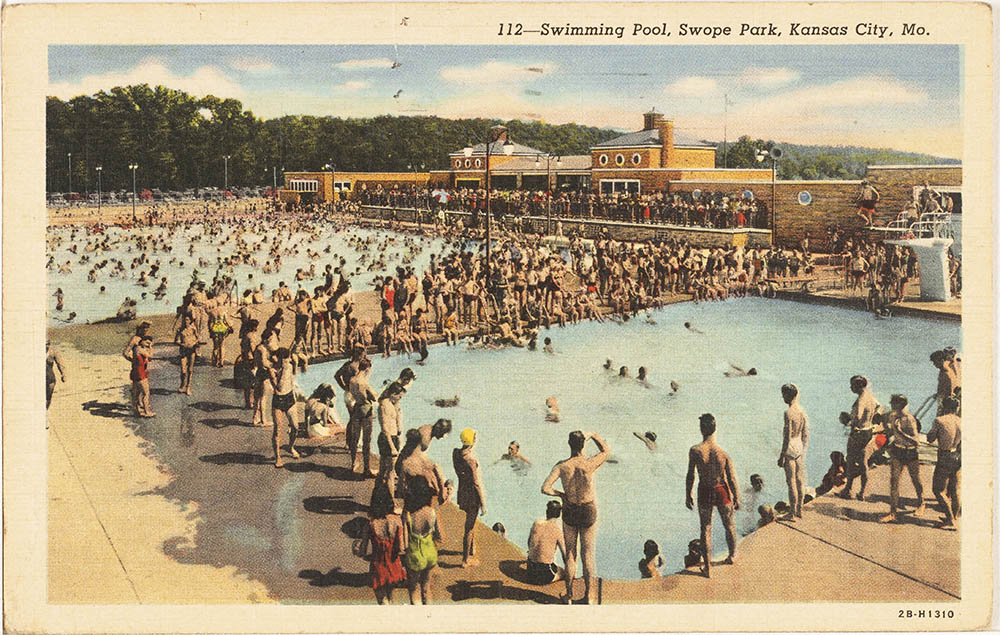And Then It Happened
Frustrated with the slow pace of civil rights reforms and outraged at the assassination of Martin Luther King, Jr., protesters turned to violence in Kansas City on April 9, 1968. The uprising shocked many residents of the city, which had long been known for its lack of racial violence despite its deep, underlying racial tensions. The assassination of King, perhaps the nation's leading exemplar of non-violent methods to bring about social change, ironically became the catalyst that brought simmering racial tensions to the point of civil disorder, not just in Kansas City, but in locales around the country.
As with most major American cities, Kansas City's population had been deeply segregated since the early 20th century. Some of the earliest organized civil rights protests in Kansas City occurred during World War II when the members of the black community protested their exclusion from employment in war industries. By 1942, these protests, combined with a genuine need for labor and fairer federal policies, won the desegregation of factories supporting the war effort in the metropolitan area.
In the 1950s other civil rights victories ensued. Taking a cue from national organizations such as the Congress of Racial Equality (CORE), the locally-based Community Committee for Social Action successfully led non-violent boycotts and protests against downtown Kansas City businesses in order to desegregate lunch counters.


Unfortunately, one perpetual trouble underlay what on the surface appeared to be a peaceful integration process. Local civil rights organizations, including Kansas City's Freedom Inc., demanded the desegregation of residential neighborhoods and an end to discriminatory practices in mortgage lending and rental policies. Even as these activists succeeded in putting this housing issue to a referendum vote planned for April 1968, the local civil rights movement shortly splintered due to disagreement over the militancy necessary to press for these reforms.
Younger blacks were less willing than their elders to wait for white politicians and largely white electorates to deliver reforms that had already been delayed for decades. On April 9, 1968, between 200 and 300 of these black youths gathered near City Hall to demand the closure of the city's schools to commemorate the day of King's funeral. Mayor Davis himself joined the protesters in their march. By most accounts, the demonstration was tense but nonviolent, although some police officers stated that objects were hurled at them. With the mayor still among the protesters, the police used tear gas to disperse the crowd.
Angered at the police actions at City Hall, and joining more than 100 cities that experienced uprisings in the wake of King’s assassination, black protesters proceeded to vandalize and burn white-owned businesses. Within two days, a three-block wide section of town running down Prospect Avenue lay in ruins. Over 1,700 National Guard troops joined 700 policemen in restoring order. For two nights bullets flew from both parties as police and firemen battled to maintain order and put out fires. Nearly 300 arrests were made, mostly of young black men. Tragically, six black citizens died in the violence.
Eager to avoid more unrest, the city council expediently reformed its housing ordinances to desegregate housing sales and rentals. This eliminated the need to hold the previously scheduled referendum vote that might have ignited even more public debates and protesters. Since the peak of tensions in April 1968, Kansas City race relations have fortunately improved, even though many of the underlying issues are still not fully resolved.
Read biographical sketches of local civil rights leaders, prepared for the Missouri Valley Special Collections, The Kansas City Public Library:
- Biography of Roy Wilkins (1901-1981), journalist and civil rights leader, by David Conrads
- Biography of Leon Jordan (1905-1970), political leader and co-founder of Freedom, Inc., by David Conrads
- John F. Ramos, Jr. (1920-1970), physician whose tenure on the school board was supported by Freedom, Inc., by Susan Jezak Ford
- Biography of Horace M. Peterson III (1945-1992), historian and archivist, member of Freedom, Inc., by Kimberly R. Riley
- Biography of Rev. D. A. Holmes (1876-1972), minister and community leader, by Kimberly R. Riley
- Biography of Bernard Powell (1947-1979), civil rights activist, by Kimberly R. Riley
- Biography of Herman A. Johnson (1916-2004) and Dorothy H. Johnson (1916-2004), philanthropists and activists, by Mary I. Beveridge
- Biography of Ilus W. Davis (1917-1996), 48th mayor of Kansas City, by Dory DeAngelo
- Biography of John Edward Perry (1870-1962), physician at Wheatley-Provident hospital, which served the African American community, by Nancy J. Hulston
- Biography of Esther Swirk Brown (1917-1970), civil rights activist, by Barbara Magerl
Check out the following books and articles about Kansas City race relations and the unrest following the death of Martin Luther King, Jr.:
- Race, Real Estate, and Uneven Development: The Kansas City Experience, 1900-2000, by Kevin Fox Gotham.
- "An Episcopal Priest's Reflections on the Kansas City Riot of 1968," by David Fly, the Missouri Historical Review, volume 100, number 2, pp. 103-112.
- "It Finally Happened Here: The 1968 Riot in Kansas City, Missouri," by Joel P. Rhodes, the Missouri Historical Review, volume 91, number 3, pp. 295-315.
- "They Stood Their Ground To Make KC a Better Place," in The Kansas City Star, January 8, 2007.
Check out oral histories held by the Missouri Valley Special Collections that reference Kansas City's racial unrest at the time of Martin Luther King, Jr.'s death:
- An Interview with Adolph Wilson
- An Interview With Arthur Bronson
- An Interview With Augustus Moore
- An Interview With Fletcher Daniels
- An Interview With Ilus Davis
- An Interview With Nelson Thompson
- An Interview With Sally Magana Ramos
Continue researching civil rights history of Kansas City using archival material held by the Missouri Valley Special Collections:
- History of Freedom, Inc., and Its Early Leaders; MA thesis, by Amy Hart
- Ramos Vertical File List – Martin Luther King, Jr.
- Ramos Vertical File: Johnson, Herman A., former Kansas City NAACP president and civil rights leader
- Vertical File: African Americans – Prominent, Nelson Thompson; a civil rights leader, pastor of the King Memorial United Methodist Church, and founder of the Martin Luther King Urban Center in Kansas City, Kansas
- Vertical File: African Americans – Prominent, Reverend William Clark, (1932-2001); a former leader of the "Urban League of Greater Kansas City for 24 years"
- Vertical File: Brown, Esther (1917-1970); a civil rights leader in the Kansas City area
- Ramos-Lincoln Collection – Vertical Files: National Association for the Advancement of Colored People, Box 2, Folder 11; National Association for the Advancement of Colored People (NAACP)
Also Visit the Black Archives of Mid-America in Kansas City for more archival resources.
References:
Sherry Lamb Schirmer, At the River's Bend: An Illustrated History of Kansas City: Independence and Jackson County (Woodland Hills, CA: Windsor Publications, 1982), 217-219.
Rick Montgomery, Shirl Kasper, Kansas City: An American Story (Kansas City, MO: Kansas City Star Books, 1999), 282-301.
Kevin Fox Gotham, Race, Real Estate, and Uneven Development: The Kansas City Experience, 1900-2000 (Albany, NY: State University of New York Press, 2002), 121-124.


